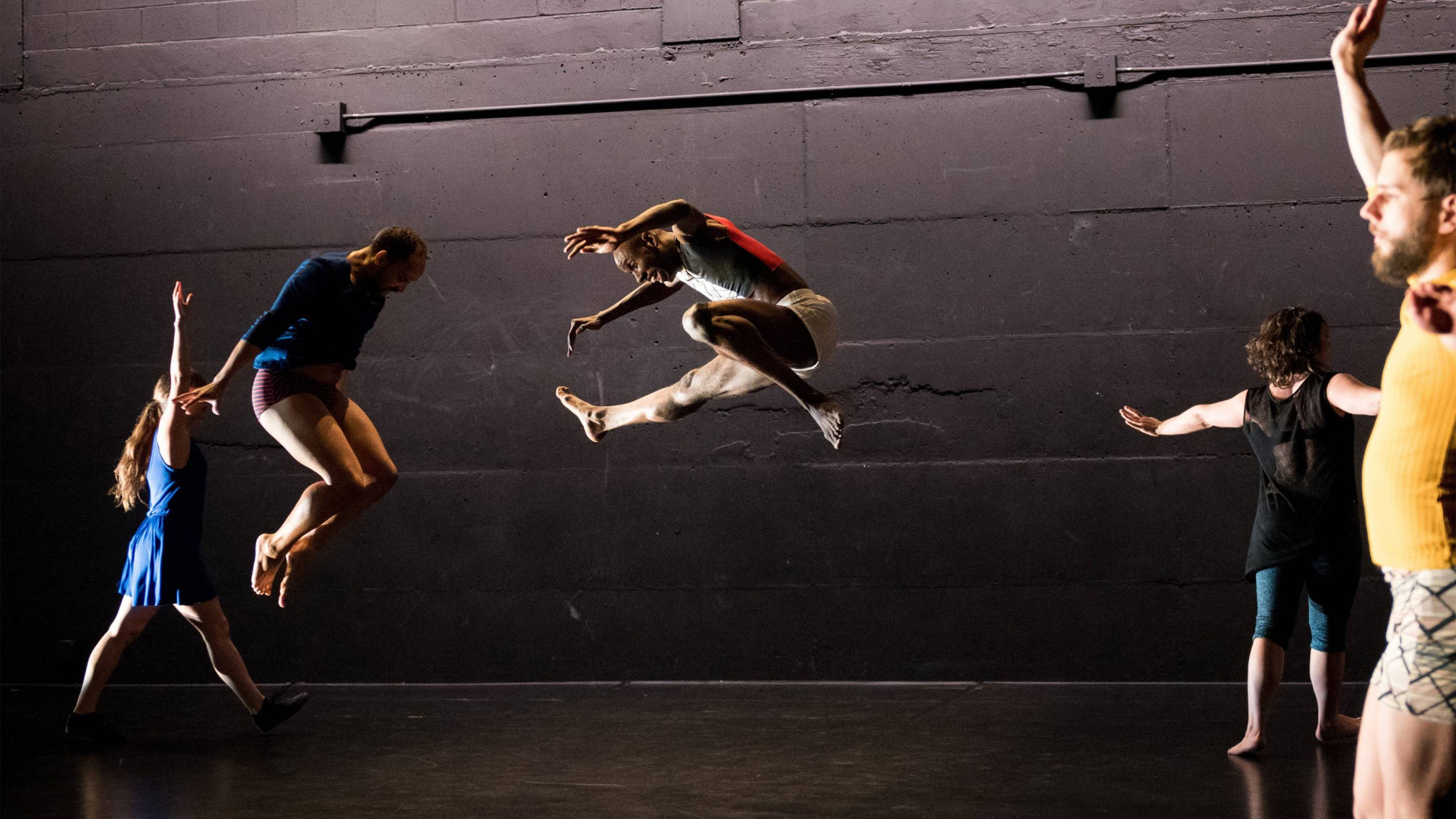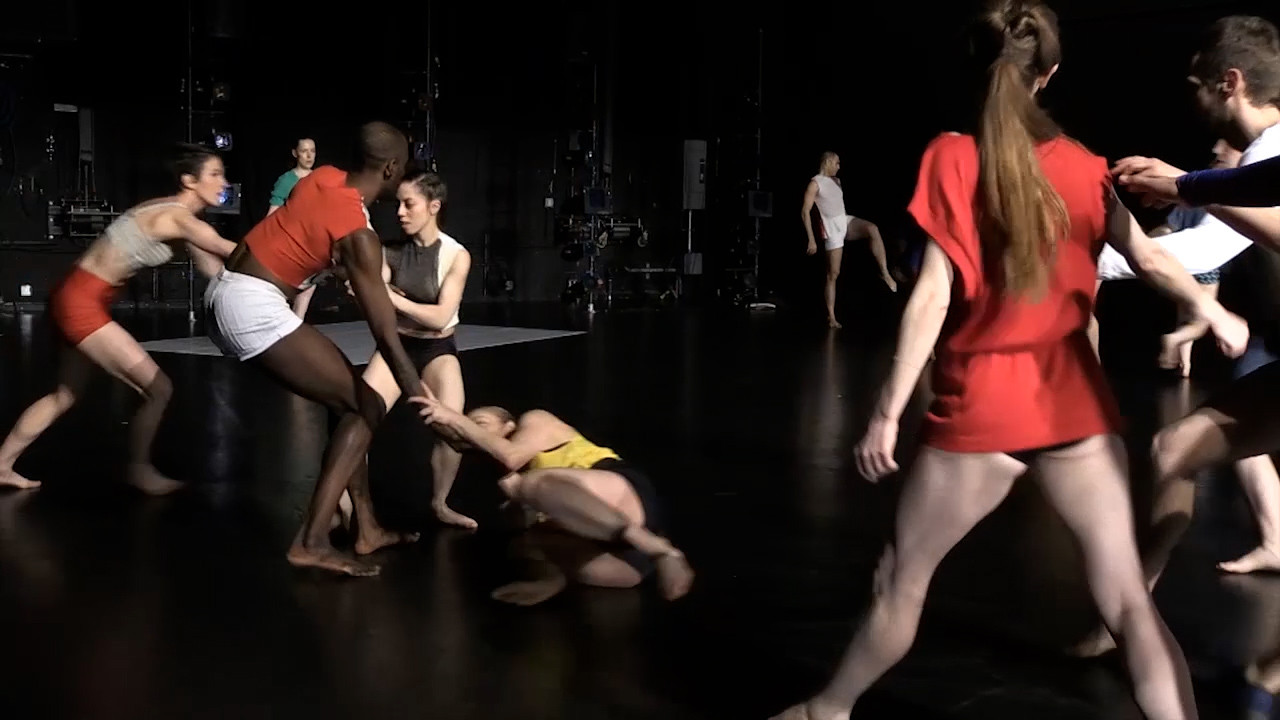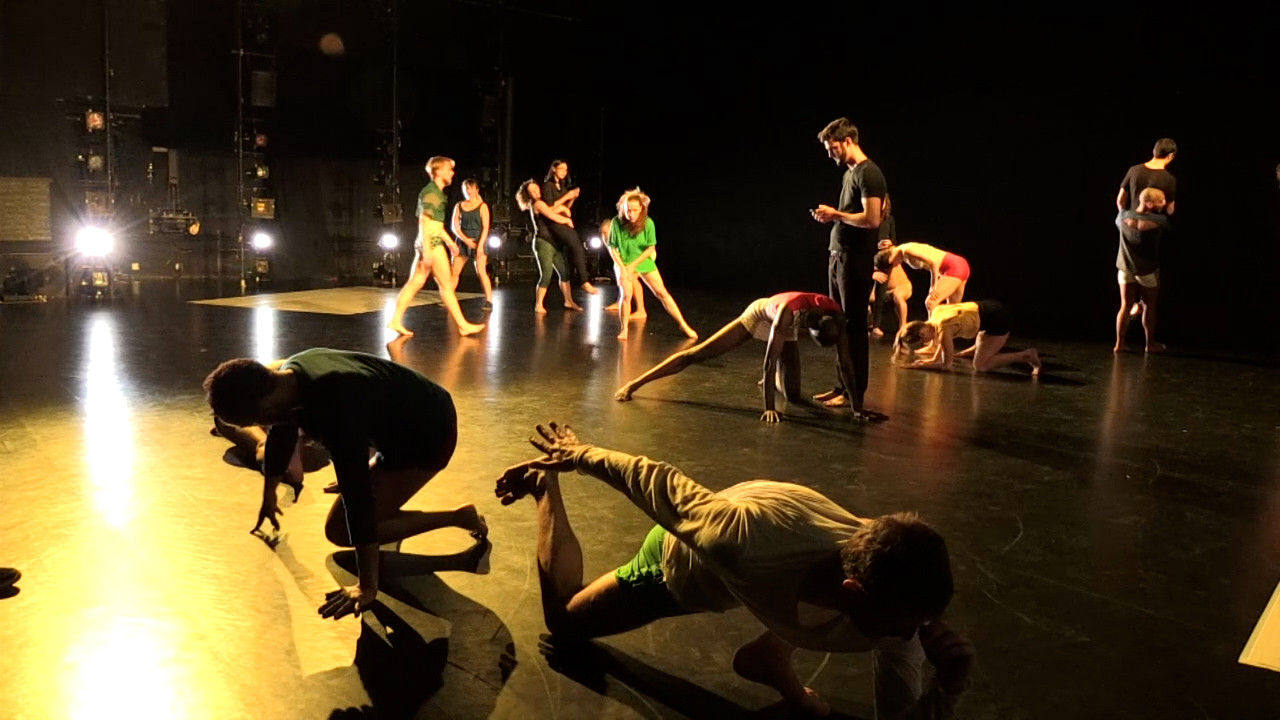Can collective decision-making models allow dancers and musicians to generate an all-new performance in real time? “There Might Be Others” takes a rule-based yet improvised approach to performance: 15 dancers and 12 percussionists chart an unscripted path through 44 “modules” of instruction for movement and music. The project explores the complex dynamics of group decision-making—and how the group’s actions are driven by the tension between an impulse for predictability and a drive to explore and take risks.
Communicating entirely through nonverbal cues and following preset parameters, the dancers and musicians jointly create a new performance each time “There Might Be Others” is staged. Each group chooses and moves through its own set of modules that dictate particular instructions. Music and dance modules offer specific rules for the performers to adapt improvisationally, their choices determining the next moment and ultimately influencing the piece’s trajectory. Modules can be performed simultaneously, up to three at a time, and leadership is shared within the group. “A dancer cannot lead two modules in a row,” states one instruction. “Say yes,” says another, encouraging an open mind to new prompts. “Keep saying yes.”
The dance was conceived and directed by Rebecca Lazier, professor of the practice and associate director of the Program in Dance at Princeton University’s Lewis Center for the Arts. Professor and Chair of Music Dan Trueman composed the award-winning musical score, which received the 2016 New York Dance and Performance “Bessie” Award for Outstanding Music Composition. CreativeX founding director and Edwin S. Wilsey Professor and Chair of the Department of Mechanical and Aerospace Engineering Naomi Ehrich Leonard helped shape the guidelines for the improvisational performance, attending rehearsals and using mathematical models to analyze and derive new ways, through the modification of rules, for dancers to join current dance modules or explore new ones.
Naomi gave the performers prompts, sometimes encouraging the dancers to switch between modules frequently and other times asking them to be more resistant to change. Naomi, Rebecca, and Dan, along with postdoctoral researchers Kayhan Özcimder and Biswadip Dey and colleague Alessio Franci, published their resulting research on social decision-making in an article in “Interdisciplinary Science Reviews” (volume 44, 2019). A book conceived as an open-source guide to reiterating and reimagining the project, “There Might Be Others” (The Operating System, 2016), serves as a dictionary of the 44 dance and music modules, including the movements, musical scores, rules and instructions, and iterative evolutions.
The modules, developed in collaboration with the performers, have rules, in some cases complex and drawn out, and in others, simple and brief. Yet, they share an openness that allows the performers to push the boundaries of how the instructions can be defined. To perform the module “Giraffe,” for example, a dancer is directed to “walk on hands and feet at the same time,” leaving how they do so and what else they might do up to them.
Similarly, the music modules range from fully scored sequences to improvisational structures that are spare and open; “Heart Attack” calls on the musicians to each stand near one of the dancers while playing aloud the sound from a metronome app on their phones. “Instead of a clear preconceived structure,” Dan writes in his Composer’s Note, “we hope we have something that can take on many structures, shapes, and forms that emerge in the moment in ways that we simply couldn’t imagine on our own.”
In her Choreographer’s Note in the book, Rebecca reflects on the challenge of creating a performance over which she ultimately has little control. “I, like the performers, have to continually shed my expectations and witness how the laws of the piece work to create harmony and dissonance in new ways every moment,” she writes. “Just like in life.”
“There Might Be Others” premiered at New York Live Arts in March 2016 and has since been performed internationally, including at the Scotia Festival of Music, Halifax (2017); Malta Festival Poznan and Gdansk Festival, Poland (2015); and an American Embassy-sponsored tour to Turkey (2015), among other venues.





